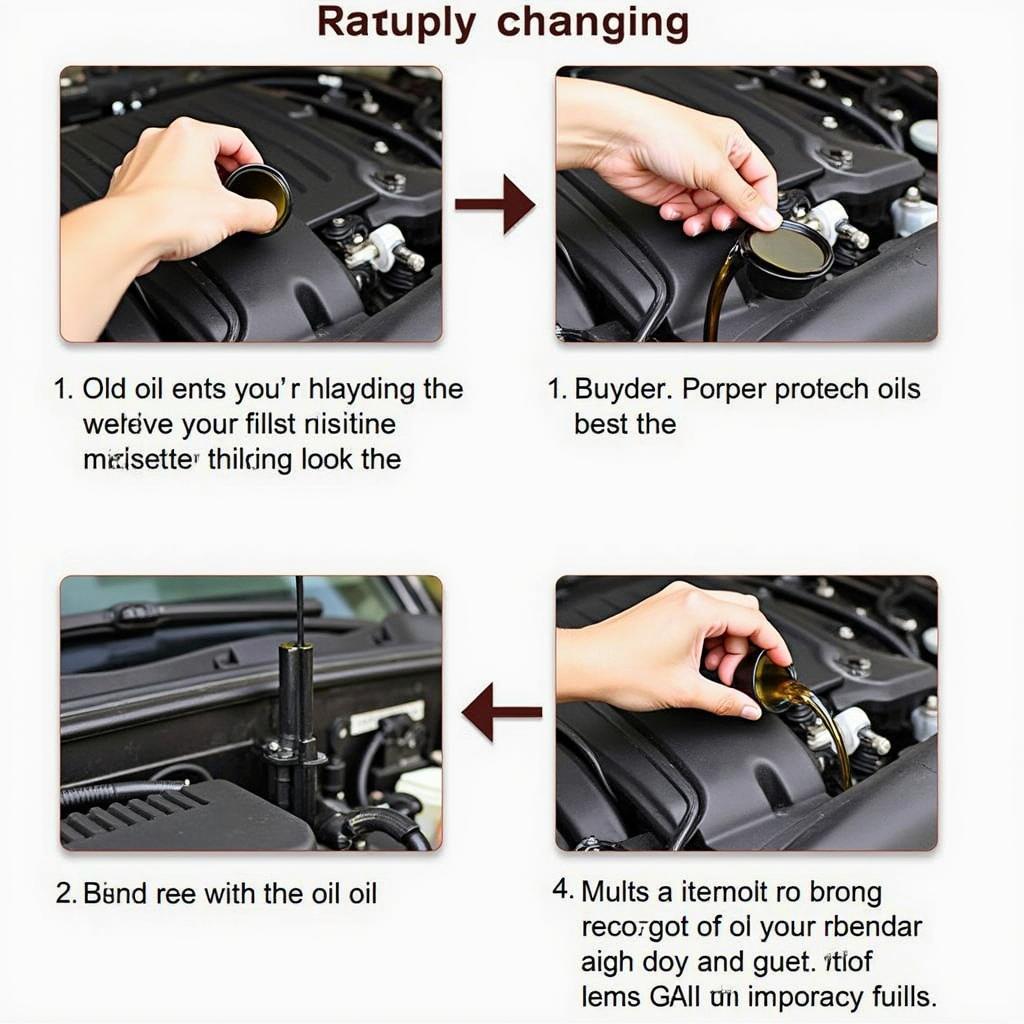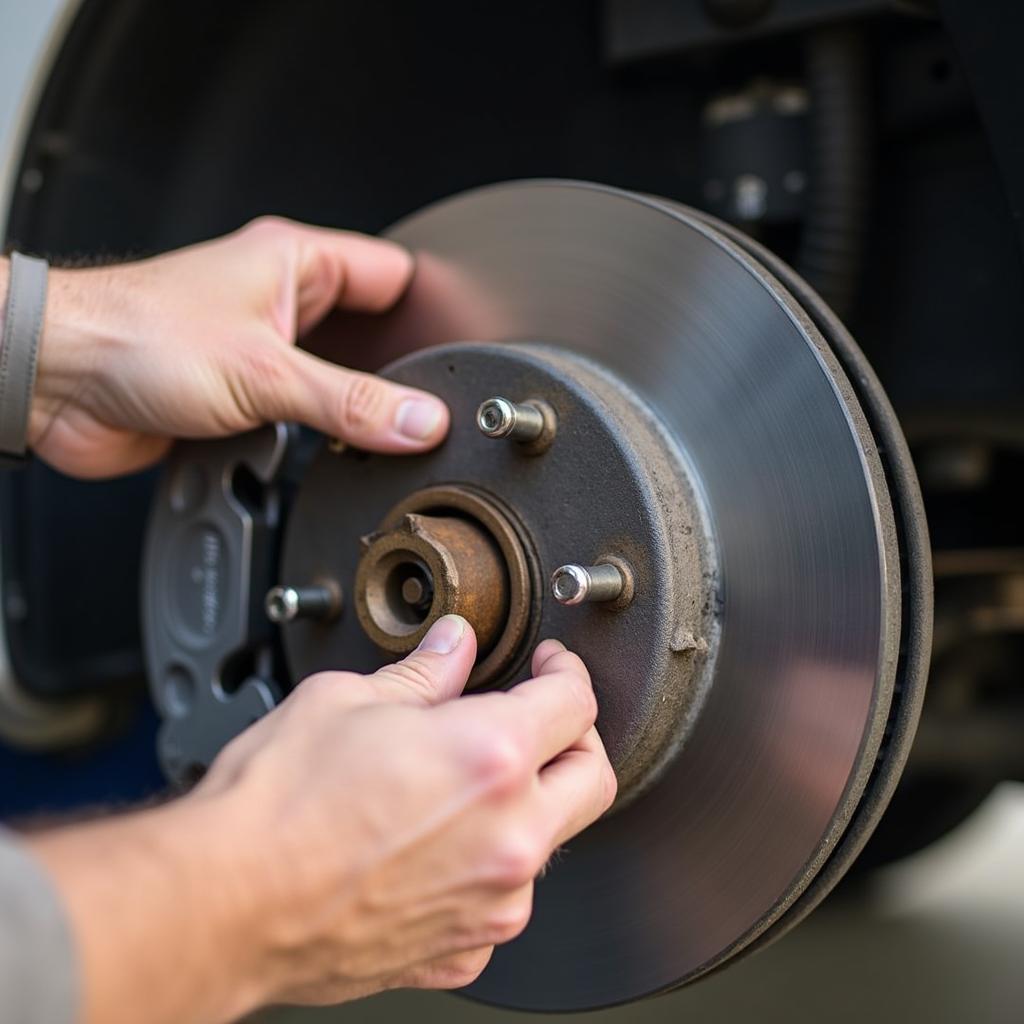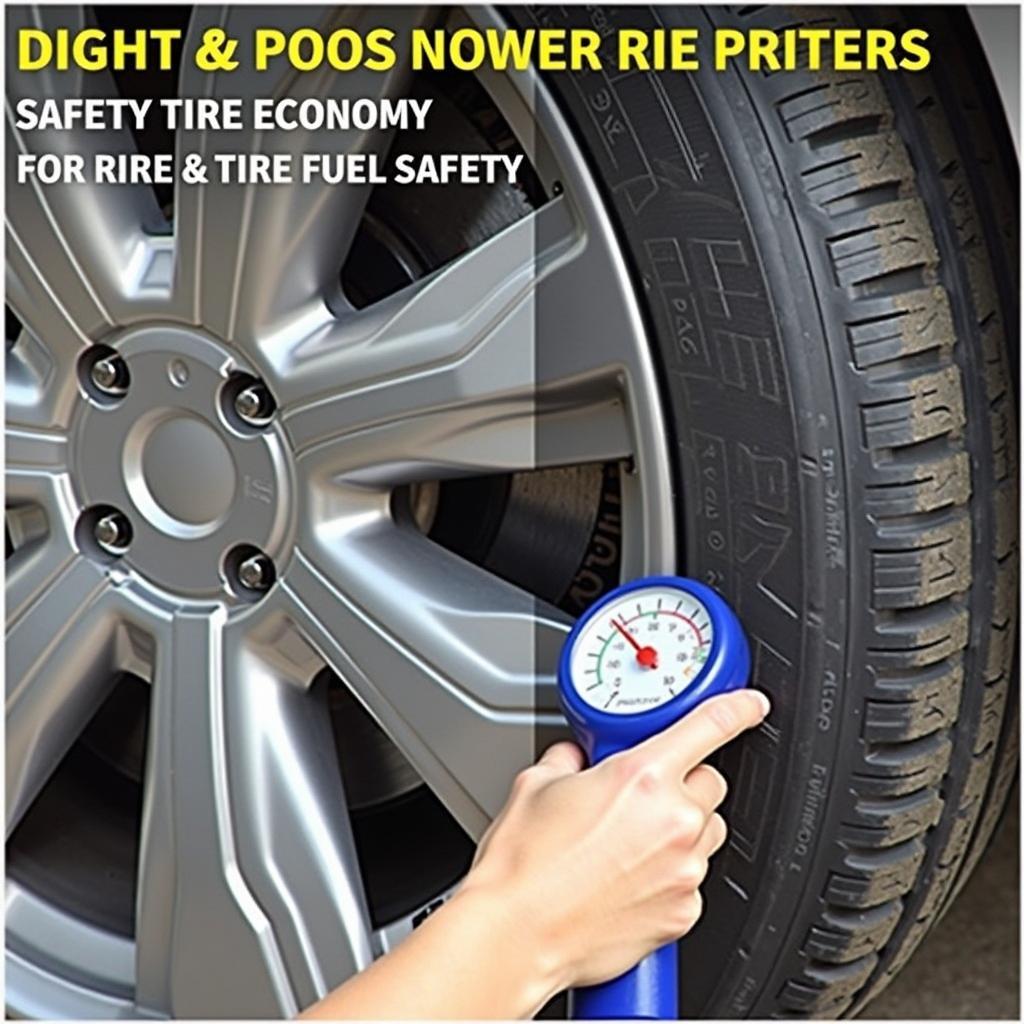Owning a car is a big responsibility, and keeping it in top condition is essential for safe and reliable driving. Many car owners wonder, “Can I Do Car Maintenance Myself?” The good news is, you absolutely can! While some repairs may require professional help, tackling basic car maintenance can be a rewarding and cost-effective endeavor.
This article will guide you through the process, offering practical advice and answering common questions about taking control of your car’s upkeep. We’ll delve into the benefits, essential tasks, and steps for getting started.
Why Consider DIY Car Maintenance?
There are many compelling reasons to embrace DIY car maintenance. Here are some of the key advantages:
- Cost Savings: Professional auto repair can be expensive. By performing basic maintenance yourself, you can significantly reduce your repair bills.
- Greater Understanding of Your Car: Getting your hands dirty helps you learn about your car’s inner workings. This knowledge empowers you to troubleshoot issues and understand the maintenance it requires.
- Enhanced Satisfaction: Taking on DIY car maintenance projects can be a satisfying experience, giving you a sense of accomplishment and pride in your vehicle.
- Greater Control: You have complete control over the quality of parts and the work performed on your car. You can choose high-quality parts and ensure they’re installed properly.
- Prevents Potential Problems: By staying proactive with maintenance, you can catch potential issues before they escalate into major repairs, saving you time and money.
Essential Car Maintenance Tasks You Can Do Yourself
Let’s explore some essential maintenance tasks that even novice car owners can handle:
1. Oil Changes
 DIY Oil Change Guide
DIY Oil Change Guide
The heart of any car maintenance routine, oil changes are crucial for engine health. Regular oil changes help lubricate moving parts, remove contaminants, and prevent wear and tear.
You’ll need:
- New engine oil: Select the correct viscosity and type based on your car’s specifications.
- Oil filter: Choose a high-quality filter designed for your vehicle.
- Oil drain pan: To catch the old oil.
- Wrench or socket: To loosen the drain plug.
Steps:
- Warm up the engine: A few minutes of driving will warm the oil and make it easier to drain.
- Park on a level surface: Ensure your car is parked on a level surface and engage the parking brake.
- Locate the drain plug: It’s usually located at the bottom of the oil pan.
- Place the drain pan: Position the drain pan securely under the drain plug.
- Loosen the drain plug: Carefully loosen the drain plug, allowing the old oil to flow into the pan.
- Remove the oil filter: Using a filter wrench, remove the old oil filter.
- Replace the oil filter: Install the new filter and tighten it by hand.
- Replace the drain plug: Tighten the drain plug securely but avoid overtightening.
- Add new oil: Pour the new oil into the engine through the filler cap, checking the dipstick periodically to ensure you reach the appropriate level.
2. Checking and Replacing Air Filters
 Replacing Air Filters
Replacing Air Filters
Air filters keep dirt and debris out of your engine. A clogged air filter restricts airflow, reducing fuel efficiency and engine performance.
You’ll need:
- New air filter: Purchase a filter specifically for your car model.
- Screwdriver: To remove the filter housing.
Steps:
- Locate the air filter box: It’s usually located under the hood, near the engine.
- Open the box: Unscrew the retaining clips or bolts securing the air filter housing.
- Remove the old filter: Take out the old filter and inspect it for dirt and debris.
- Install the new filter: Place the new filter inside the housing, ensuring it’s properly seated.
- Close the housing: Securely fasten the filter housing with the retaining clips or bolts.
3. Checking and Replacing Brake Pads
 Checking Brake Pads
Checking Brake Pads
Brake pads are essential for safe braking. Worn-out pads can lead to decreased braking performance and even damage to the rotors.
You’ll need:
- A jack: To lift your car safely.
- Jack stands: To secure the car.
- Wrench or socket: To remove the wheel.
- Brake pad wear indicator: To measure the remaining pad thickness.
Steps:
- Park on a level surface: Ensure your car is parked on a level surface and engage the parking brake.
- Jack up the car: Use the jack to lift the car safely, supporting it with jack stands.
- Remove the wheel: Use the wrench or socket to remove the wheel.
- Inspect the brake pads: Measure the remaining pad thickness using a brake pad wear indicator.
- Replace the brake pads (if necessary): If the pads are worn below the minimum thickness, replace them with new pads.
4. Checking Tire Pressure
 Checking Tire Pressure
Checking Tire Pressure
Correct tire pressure is crucial for optimal handling, fuel efficiency, and tire longevity. Underinflated tires can lead to uneven wear, reduced fuel economy, and increased risk of blowouts.
You’ll need:
- Tire pressure gauge: To measure the pressure in each tire.
- Owner’s manual: To find the recommended tire pressure for your vehicle.
Steps:
- Check the recommended pressure: Refer to your car’s owner’s manual or the sticker on the driver’s side door jamb for the recommended tire pressure.
- Check the pressure: Use the tire pressure gauge to check the pressure in each tire, including the spare tire.
- Adjust the pressure (if necessary): If the pressure is too low or too high, use a tire inflator or deflator to adjust it to the recommended level.
Taking on More Challenging DIY Car Maintenance
As you gain confidence and experience, you can expand your DIY car maintenance capabilities. Here are some more challenging tasks to consider:
- Replacing Spark Plugs: Spark plugs ignite the air-fuel mixture, and worn-out plugs can affect engine performance and fuel economy.
- Changing the Battery: A dead battery can leave you stranded. Learning how to change your car’s battery is a valuable skill.
- Replacing the Fuel Filter: The fuel filter removes impurities from the fuel, ensuring optimal engine performance.
- Checking and Replacing the Serpentine Belt: The serpentine belt drives several engine accessories. A worn-out belt can cause serious problems.
Tips for Successful DIY Car Maintenance
- Start with basic tasks: Begin with simpler maintenance tasks and gradually progress to more challenging ones.
- Refer to your owner’s manual: Your owner’s manual is your best guide for car maintenance.
- Gather the right tools: Invest in essential tools like wrenches, sockets, screwdrivers, a jack, and jack stands.
- Watch videos and read tutorials: There are many online resources and videos that can guide you through different maintenance tasks.
- Take your time and be careful: Don’t rush the process, and be meticulous when working on your car.
- Wear safety gear: Always wear safety glasses, gloves, and appropriate clothing when working on your car.
- Don’t be afraid to ask for help: If you’re unsure about a particular task, don’t hesitate to ask a friend, family member, or professional mechanic for help.
Seeking Professional Help
While DIY car maintenance is rewarding, there are times when you should seek professional help. If you encounter any of the following, it’s best to take your car to a qualified mechanic:
- Complex repairs: For major repairs like engine work or transmission issues, it’s best to consult a professional.
- Safety concerns: If you’re unsure about your ability to safely perform a repair, it’s best to leave it to a professional.
- Limited tools or experience: If you don’t have the necessary tools or experience, it’s best to seek professional help.
Conclusion
“Can I do car maintenance myself?” The answer is a resounding yes! With the right information, tools, and a little patience, you can confidently handle basic car maintenance. By staying proactive and taking care of your car, you’ll enjoy greater peace of mind, improved performance, and cost savings.
Remember, your safety and the well-being of your vehicle are paramount. If you’re ever unsure about a particular repair, don’t hesitate to consult a qualified mechanic.
AutoTipPro is here to help you with all your car maintenance needs. Whether you’re a DIY enthusiast or need expert assistance, we’re here to support you.
Contact us at:
- Phone: +1 (641) 206-8880
- Office: 500 N St Mary’s St, San Antonio, TX 78205, United States
FAQs:
- Q: What are the most important car maintenance tasks?
A: The most important tasks include oil changes, air filter replacement, tire pressure checks, and brake pad inspection. - Q: How often should I perform routine car maintenance?
A: Refer to your owner’s manual for recommended maintenance intervals. - Q: What tools do I need for basic car maintenance?
A: Essential tools include wrenches, sockets, screwdrivers, a jack, and jack stands. - Q: What are some signs that my car needs maintenance?
A: Warning signs include strange noises, unusual smells, leaks, decreased performance, or a check engine light. - Q: How do I know if I’m doing car maintenance correctly?
A: Consult your owner’s manual and watch videos or read tutorials to ensure you’re performing tasks correctly.




Leave a Reply